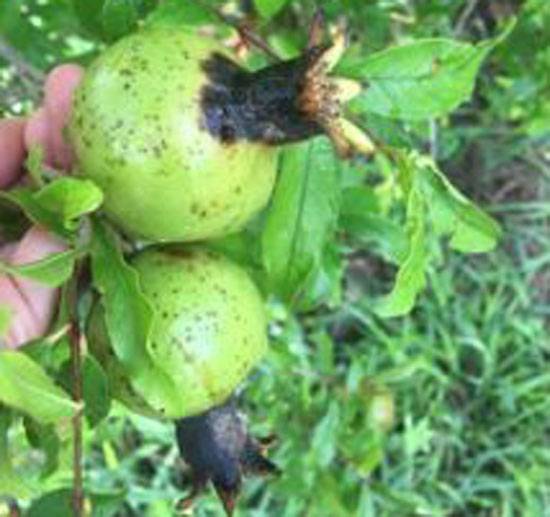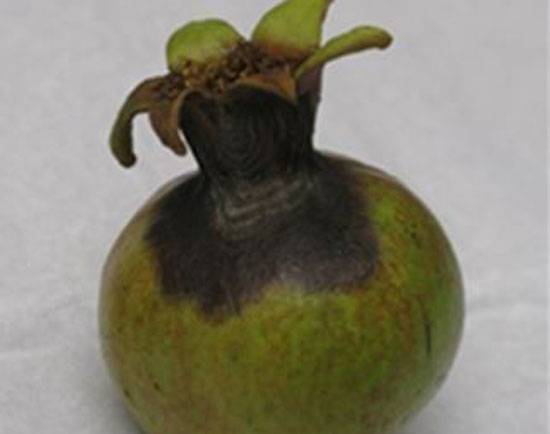Pomegranate
Anthracnose

Colletotrichum spp.
Fungal Disease

Colletotrichum spp.
Fungal Disease

Colletotrichum spp.
Fungal Disease

Colletotrichum spp.
Fungal Disease

Colletotrichum spp.
Fungal Disease

Colletotrichum spp.
Fungal Disease
Anthracnose, caused by species of the Colletotrichum fungus, is a significant disease affecting pomegranates and other fruit crops. The disease manifests in various forms on different parts of the plant, leading to considerable damage if not managed properly.
Symptoms:
- On Fruits: Initial symptoms are hard, dark brown to black necrotic lesions on the calyx of green fruits. As the fruit ripens, these lesions turn into sunken, rotted spots that spread through the rind and arils, causing decay. The lesions often exude gray to orange masses of spores, especially in wet, humid conditions.
- On Leaves: Anthracnose causes irregular brown spots, which can lead to defoliation, especially after prolonged rain events.
- On Shoots: The disease infects young shoots, leading to stem tip dieback and twig cankers, further affecting plant growth and productivity.
Anthracnose thrives in warm, wet conditions and can severely impact yield and fruit quality, especially during extended rainy periods. Effective management includes proper pruning, good air circulation, and the application of appropriate fungicides to control the spread of the disease.




